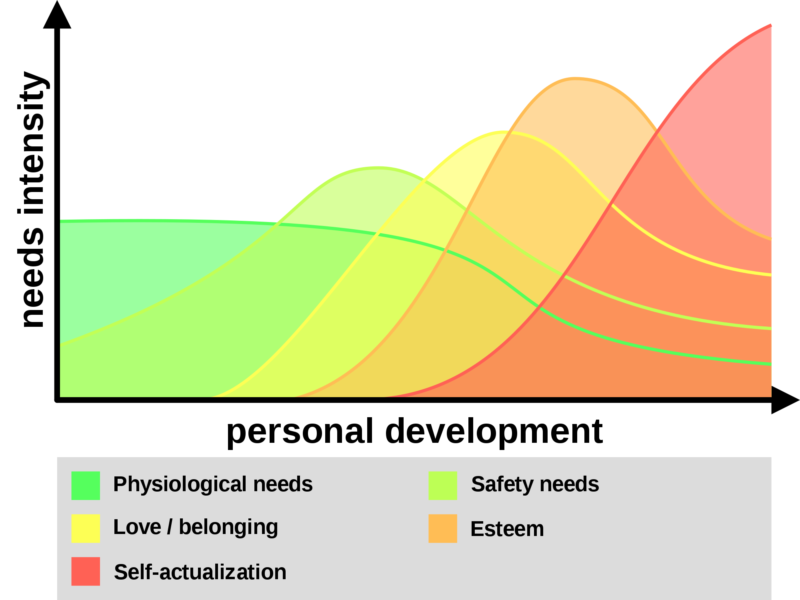Why Physical Learning Environments Matter
I have been teaching adults for over 10 years. I have also been an adult student in both traditional and nontraditional education for over half of my life. Over this period of time, I have both taught and taken classes that were good and some that were excellent. One of the key contributors to the difference of the quality of the classes was the environment.
The classroom environment is multifaceted. It includes the “physical setting, the psychological environment created through social contexts, and numerous instructional components related to [instructor] characteristics and behaviors.” (Miller)
In my doctoral coursework, we spent an entire course researching and conducting meta-analyses on classroom strategy and physical environments for adult learners. At the time, I didn’t understand the impacts the physical environment can have on learning, but now, after using the strategies I learned, I am a huge proponent for creating a learning environment that is both inviting and empowering to students.
In this post, I am going to focus on the physical setting of the classroom because the physical setting has a huge impact in classes that are both non-traditional and accelerated, which is the structure in which I have been teaching adults for many years. While I teach both non-traditional and accelerated courses, the physical setting is important in any type of classroom.
What is non-traditional and accelerated?
For the sake of reference, non-traditional is classified as a course or program of study that is made up of primarily adult students who have life and work experience. They have come to the learning environment, often after time away or for the first time, for a purpose that is encompassed in specific personal goals. In non-traditional education, the approach to learning is typically hands-on and accelerated.
An accelerated course/program is one that teaches a broad range of concepts and ideas about a specific topic in a much shorter amount of time, which is usually less than a semester that is typical in traditional education. Non-traditional students in accelerated programs also complete activities outside of class that are directed towards concepts and knowledge acquired in class and prepare them for the next thing they will learn.
Why the Physical Environment Matters
Now that we have an understanding of what I mean when I say non-traditional and accelerated, let’s look at why the physical environment is so important to learning.
Think to your last unpleasant learning experience. I am willing to bet that the facilitator or teacher didn’t use a physical environment strategy that catered to the needs of the students.
In research, most of the feedback from students on unpleasant learning experiences includes: 1. the instructor was cold and aloof, 2. they didn’t learn as much or what they wanted to learn, or 3. the environment wasn’t pleasant.
One of the most important reasons physical environment matters is because it directly impacts morale and student learning. The arrangement of the seating is an important variable to this.
Many who do not understand how the physical environment (where the desks, chairs, projector location, whiteboards, etc. are located) impacts a students mind-set and approach to learning miss a huge opportunity for deeper learning and relationships. “It’s also a no-brainer that classrooms should be inviting, environments that make students feel good to be there.” (Phillips)

Students have an immense need for safety, belonging, and esteem in learning environments because just by signing up and then showing up, they have made themselves vulnerable to the instructor and their peers. If they enter into an environment where they see the backs of the heads of their peers or the instructor stands behind a podium far away from them, it makes it harder to find the comfort necessary to open up and learn.
This is why teachers must not only create a psychologically safe environment, but also a physical environment that encourages interaction with other students and instructors. I call my favorite set up “welcome to dinner.” I have never been invited to someone’s home for a meal and sat with my back to them at the table. I am always either beside them or seated directly in front of them because there is a level of intimacy in conversation over a common interest: the food! Or, in my student’s case, the learning.

The same is true for learning environments that have a large amount of students in them. Breaking the class up into smaller groups with a leader (either a student volunteer or assistant) in a dinner style setup helps students to become acquainted and let’s them feel free to ask questions among the guests at their table. Usually if many of them have the same question, they will team up and ask it together which produces a sense of community and belonging.
Often times I only have 6 sessions with a group of students who are new to me and to each other. I could waste time trying to do team building activities and then send them back to their forward facing seats, or I can move the chairs and desks around, test the waters, and provide them with smaller communities within the larger classroom community where they can feel safe and included.
Conclusion
Over the past decade of teaching, I have successfully created learning environments that have made students feel welcomed, respected, and loved. This is very important to me because when I teach, my students have trusted that I will give them what they need.
As an educator, giving them what they need requires more than content knowledge. It requires me understanding that as humans, we have needs that are also dictated by the environments in which we choose to learn.
I also understand that many of my students are coming from work and need a fun place to fail, learn, and grow. I need that also. Manipulation of the physical environment impacts us all and can be the difference between either a good class, or an excellent class. I want excellent classes!
Teach on! Dr. T
